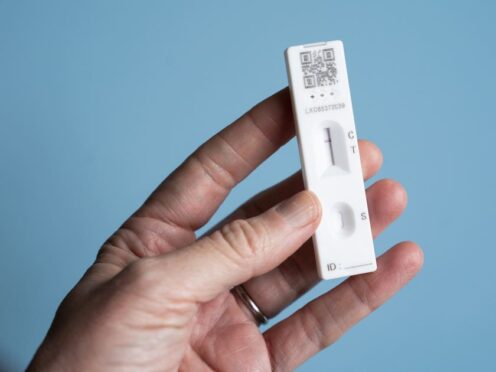Some families faced a “stark choice” between saying goodbye to a loved one or attending their funeral during the pandemic if PPE was not available, an inquiry has heard.
Dr Barbara Miles, president of the Scottish Intensive Care Society, said that if a patient was being treated in a unit where full personal protective equipment (PPE) had to be worn, a family member would be deemed a close contact if they went in to say a final farewell without it.
They would then have to isolate and risk missing the funeral if it fell within the isolation period.
Dr Barbara Miles, herself an intensive care doctor in Glasgow, was giving evidence to the Scottish Covid-19 Inquiry on Thursday.

Faryma Bahrami, junior counsel to the inquiry, asked her to expand on a written statement she submitted to it.
She said: “You say that sometimes a stark choice had to be presented to families with regards to visiting their loved one at the end of life or attending a funeral.”
Dr Miles replied: “If your family member was at that point within an environment that required personal protective equipment to deem that you have not been a Covid contact, staff in order to go into that environment would require to be wearing full PPE.
“That was not always available in all areas to patients’ family members visiting, so if they went into that area when the patient was sadly at the end of their life to visit their family member they would be deemed to be a Covid contact, and the advice at that point was that they would go home and isolate, and if the funeral occurred during that period of isolation then the advice would have been at that point that they should not attend the funeral.”
Addressing the impact of the pandemic on intensive care, she said that critical care services had never previously been expanded to the extent that they were during that period and that it raised challenges particularly around staffing.
She said there was an increase in staff turnover during the pandemic which had an impact on the level of experience in intensive care units.
Dr Miles told the inquiry: “There was stress and burnout, I think people felt overwhelmed at times by what they had gone through and some people felt they could not continue working in critical care afterwards, so after the first wave of the pandemic most critical care units started to see a loss of their staff base.
“There is always some turnover of staff base, there was an increase in that and, as a result, a lot of critical care units lost a lot of experience.”
The inquiry also heard there was a “complete lack” of adequate PPE for doctors working in general practice during the pandemic.
Dr Iain Kennedy, chairman of BMA Scotland, said the fluid-resistant paper surgical masks GPs were given were “relatively useless” in protecting workers from airborne Covid-19.
He said that even in hospitals the respiratory protective equipment such as FFP3 masks “that we probably all should have had” were reserved for those in intensive care units and doing so-called aerosol-generating procedures.
Dr Kennedy said there was a “complete lack of adequate PPE in terms of respiratory protective equipment in general practice and a relative lack in the hospital sector”.
The doctor, a GP from Inverness, said authorities were affected by “droplet dogma”.
He said: “I think the fundamental problem was there was a lack of recognition that Covid was an airborne disease.
“We in the BMA refer to droplet dogma, which meant that fundamentally the wrong sort, type of PPE respiratory equipment was supplied to us.
“Surgical masks are good at preventing droplets going from healthcare worker to patient, but they do absolutely nothing in terms of preventing to prevent air coming to the doctor.”
Graham Dunlop, another junior counsel to the inquiry, asked: “Was that explained to the Scottish Government by the BMA?”
He replied: “I believe it was, a number of times.”
The inquiry also heard there were issues with PPE not properly fitting some people, particularly women and ethnic minority groups and men with beards, as it has been designed for male bodies and heads.
On behalf of the Scottish Government, a spokesperson offered its “deepest sympathies” to those who lost loved ones during the pandemic, stating it is committed to responding and learning lessons from the inquiry.
They added: “It would be inappropriate to comment on the detail of evidence being considered by the Scottish inquiry while hearings are ongoing.”
The inquiry was established to discover the facts and learn the lessons of the strategic devolved response to the Covid-19 pandemic in Scotland, covering the period January 1, 2020 to December 31, 2022.
The inquiry, before Lord Brailsford, continues.
